Conor Brockbank, Modern History Graduate
Part five in this blogpost series will explore the lives and experiences of refugees from National Socialism who worked in domestic service in houses throughout Aberystwyth and Llanbadarn Fawr. This blog will address some of the questions set out in the first blog in this series, as well as questions such as how far these refugees’ careers and lives were affected and changed by being forced to flee and seek refuge elsewhere, and what were their experiences of working in domestic service?
Before exploring the lives of these refugees, it is important to understand the wider context of the schemes and wider movement of refugees who came to Britain to work in domestic service. This industry in the late 1930s had the largest perceived shortages and partly in an effort to fill these shortages, a scheme was set up where domestic service permits in the UK were given to refugees from Germany and Austria. According to the historian Raffaella Sarti, many refugees gained these permits to work in domestic service, including hundreds of couples and around 14,000 women. Sarti also indicates that the refugees who gained permits to work in domestic service were not mainly from domestic service backgrounds, for many these permits were an opportunity to seek refuge in the UK.
What is known about the lives of these refugees who took up work in domestic service in Aberystwyth and the surrounding areas varies greatly, as there are few available primary sources which remain, or which even recorded their working lives as domestic servants in the first place. A wealth and depth of knowledge about the lives of these refugees is the exception rather than the rule. Despite these restrictions, the following lives of each refugee in domestic service in this blog have been explored in as great a depth as the sources and available information allow.
The refugees who were working in domestic service in Aberystwyth ended up working in various households in the area, such as working in the homes of university lecturers from the evacuated University College London (UCL). One such refugee, who was the only female domestic servant to be interned was Erna Neuburger. Erna was born on 21 October 1911 in Strassbessenbach, Bavaria, in Germany. Erna’s life from her birth until being employed in London as a housekeeper for Prof. Cyril Burt, who was a Psychology professor at UCL, is unknown. Upon the evacuation of the UCL’s psychology department in 1939 to Aberystwyth, Erna moved with Prof. Burt and continued her housekeeping duties at 4 Laura Place. She remained here until she was interned on the Isle of Man in June 1940, after being recategorised from C to A. It is unclear why Erna was recategorised. Her internment on the Isle of Man lasted until 1944. Upon being released and the psychology department’s relocation back to London, she again took up her position as Prof. Burt’s housekeeper. Erna’s life after this is unclear.
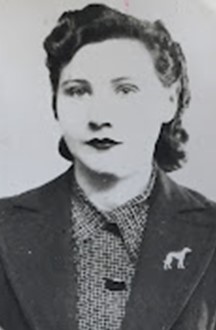
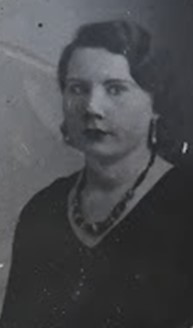
Erna Neuburger (b.1911), photos within Police Memorandum Book inscribed ‘Aliens’ Photographs’, H.W.?Owen, MUS/204, Archifdy Ceredigion Archives
Other refugees worked for established local families or those of private means, such as Kate Strauss. Kate was born on 23 February 1901 in Thuringia, Germany. Much of her life is unknown, and it is unclear what Kate did before leaving Germany. What is known is that by September 1939 she was a cook at Doleu in Llanbadarn Fawr for the Greer family, a local, well-known and established family in the area. Kate then left Aberystwyth, a day after being assigned as ‘C’ at a local tribunal in Aberystwyth on 23 October 1939. Hereafter she disappears from the historical record.
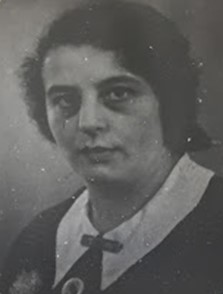
Another refugee, who was also called Kate, worked for a lady of private means. Kate Sara Freund was born on 30 June 1899 in Breslau, Germany, now Wroclaw, Poland. Much like Kate Strauss, not much is known about her life. Kate was a music teacher before she left Germany and took up a domestic service permit in the UK. By October 1939, she was working as a domestic servant at Glyngorse on North Road in Aberystwyth for an Annie Lewis, who was a single elderly lady of private means. Kate clearly did not stay long in Aberystwyth after her tribunal, where she was categorised as ‘C’, as by November 1939, she had moved to Birkenhead. While there, Kate continued to work as a domestic servant, this time at an address in Balls Road. This is the last known location of Kate and what her life entailed after moving to Balls Road in Birkenhead is unknown.
It is unclear for whom the remaining refugee domestics in Aberystwyth explored in this blog worked, such as Stephanie ‘Steffi’ Bösinger. Stephanie was born on 28 November 1913 in Eisenerz, Austria. By October 1939, she was working as a domestic at Heddle on Llanbadarn Road in Aberystwyth. While there, Stephanie was categorised as ‘C’ at a tribunal also held in October 1939. Stephanie remained working at Heddle until she left Aberystwyth in February 1940. On 22 November 1941, Stephanie joined the Auxiliary Territorial Service (ATS), which had been established in 1938. In March 1942, Stephanie got engaged to Kenneth Buckley, who was serving in the Royal Engineers, and got married in the local parish church of Kenneth’s in Nuneaton, Warwickshire. By 1947, Stephanie was living on Lutterworth Road in Nuneaton, and it was from this address that they both departed to Cape Town, on the Winchester Castle from Southampton, bound for South Africa. The records do not indicate that Stephanie returned to the U.K. and where her life led her, or what it entailed, is unclear from the point that they boarded the Winchester Castle for their future life in South Africa.
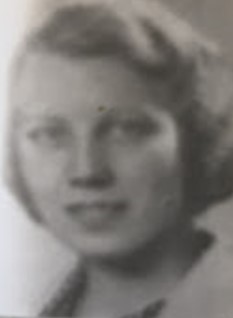
Less is known about the life of Stephanie’s fellow refugee, Tamara Lupnitz. Tamara was born on 21 January 1920 in Berlin, Germany. She moved to Aberystwyth and was working as a domestic servant at the Bay Hotel by October 1939, where she was categorised as ‘C’ at a tribunal held in Aberystwyth. Tamara then moved in 1940 within Aberystwyth, to take up work as a domestic servant at Abergeldie House on Victoria Terrace. She went on to marry Jindrich Kienzel in Ealing in 1956. Where Tamara’s life led her after this is unknown.
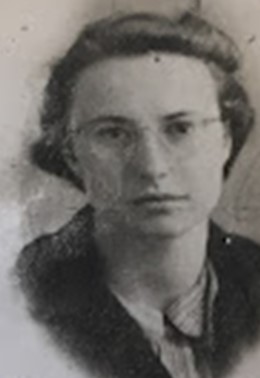
Other refugees did not arrive in Aberystwyth until 1940 to work in domestic service, such as Johanna Kern. Johanna was born on 21 November 1916 in Laibach, Baden-Wüerttemberg, Germany. Johanna was a domestic servant by October 1939, in Tonbridge in Kent, working for a Mrs Chalkin. She was then categorised as ‘C’ at a tribunal while she was still in Kent. By June of 1940, she had moved away from Kent and to Aberystwyth, where she was a domestic servant at Edlestone House on Queen’s Road. She married Richard Grosvenor, an RAF man, in April 1941, while she was in Aberystwyth. They were nearly married for a year and a half when Richard was killed in September 1942. Johanna never re-married and passed away in July 2008 in Gloucestershire.
Other refugees in Aberystwyth also came from the state of Baden-Wüerttemberg, such as Lilly Bella Adler. Lilly was born on 24 July 1910 in Pforzheim, Baden-Wüerttemberg, Germany. By October 1939, she was a domestic servant at 4a Northgate Street in Aberystwyth. During October 1939, Lily was also categorised as ‘C’ at a tribunal held that month. She is noted as having left Aberystwyth and the district in the police memorandum book held in the Ceredigion Archives, but it is unclear when this occurred. In 1946, she went onto marry Harry Weisz in Willesden, Middlesex. Lily passed away in August 1998 in Hendon, Middlesex.
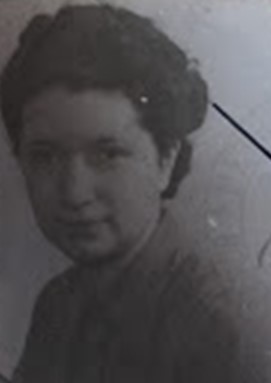
Amalie Eva Ruth Laaser, also known as Mala Laaser, is the last refugee who worked in domestic service whose life will be explored in this blog. Mala is unique in the case of the refugees who are the focus of these final two blogs, as she is the only one to have worked in domestic service in both Aberystwyth as well as the surrounding areas outside of Aberystwyth. Mala was born on 19 July 1911 in Königsberg, Germany, now Kaliningrad in Russia and she was born into a well-known Jewish family in the area. Early in her career, Mala was an actress and from around 1934 until 1938, she was also her brother, Dr. Walter Lasser’s housekeeper.
By 1937, Mala was a writer and contributor for Central–Verein–Zeitung, a weekly publication for the German Jewish community. As part of her contributions as a writer to this publication, she wrote a four-part novella about a love story set in contemporary Weimar Germany, called Karl und Manci. This novella was published in 2017, alongside a series of other publications which were originally produced during the period covered by Weimar Germany. Mala was also a prominent writer in the late 1930s, for many other Jewish publications that had a readership in Berlin and across the whole of Germany, such as the Jewish Community Gazette, where she was the editor of the women’s segment of the publication as well as Der Morgen. This was a period in which Mala’s writing flourished, but this active writing and journalistic career was cut short, as according to the Jewish studies scholar Sarah Fraiman, Jewish publications, such as Der Morgen, were forced to close and wind-up publication in 1938, after the November pogroms. Such a decision left Mala with very few prospects of being able to carry on her writing and journalistic career in Germany.
Mala was engaged for a short period during the 1930s to Jacob Picard, a lawyer and a poet, and it is through letters she began sending to him in 1942 until her death which tell most of Mala’s life story before and after she sought refuge in the UK alongside Walter in 1939. Mala and Walter could not bring their mother with them when they fled, and Mala lived for the rest of her life not knowing what happened to her. Walter went on to serve in the Royal Engineers and in August 1944, he died while he was serving in Italy. Mala on the other hand worked in domestic service and recalls in a letter to Jacob in April 1943 about this:
I came here on the well-known domestic permit, and have worked myself up from house parlour maid to school mistress which I am now.
As Mala recalls, this permit allowed her to work up to being a school mistress and in her pursuit of this, she seems to have moved around a lot. In September 1939, she is first listed as a parlour maid in Godalming, Surrey, for a Mrs E. Kilby. While working in Godalming, Mala was categorised as ‘C’ during her tribunal. By June of 1940, Mala had moved to Wales, taking up work as a domestic servant at Dolywern on North Road in Aberystwyth and it appears she worked there until around late 1940. Mala recalls in the same letter to Jacob in April 1943 that from the time she sought refuge through the domestic permit in 1939, that she ‘had a rough time, until I came to the Vicarage’. The Vicarage she refers to in this letter was in Llanarth, where she remained as a secretary and housekeeper, from around late 1940 until January 1943.
During this time from late 1941 onwards, she was working fourteen-hour days, seven days a week, which continued constantly for at least two and a half years. While she was at the Vicarage, she recollects in a letter to Jacob in August 1943 that Walter visited and stayed with her there when he was on leave. During her time there, she was also added to the Welsh Suspects List, which was a list of people for whom the authorities felt it was important to keep an eye on. The reasons why Mala ended up on this list are unclear. At the start of the 1940-1941 academic year, Mala alongside her work at the Vicarage, also started as an external student at London University, but Mala, it appears did not complete this degree, as in a letter to Jacob in April 1944, she writes that she had ‘no energy to try again’ and that she was ‘quite respectable, even without a degree’.
In January 1943, Mala left Wales after living and working there for nearly three years, to take up work as a school mistress, the role she refers to in the April 1943 letter to Jacob, at Ryton Hall School in Shifnal, Shropshire. She remained here until around August of that year. Mala appears to have continued, while she was here, similar working hours to those which she had at the Vicarage. From there she moved to Richmond in Surrey in search of teaching work and was ‘sheltered by a boy from Aussig’ who provided her with accommodation, according to a letter sent to Jacob in August 1943. In this same letter, Mala comments on her moving around a lot during such a comparatively short period of time and how this clearly made it hard for her to feel settled, remarking that:
I have come to be sort of a tramp, with trunks never decently unpacked.
Mala remained in the Richmond area until around November 1946, while living and teaching there, she got engaged and married to Henry Moyes in 1946, and they had a daughter together later that year. From around 1946 onwards she also tried to settle claims to her property in Germany, but in a letter Henry wrote to Jacob on her death in 1953, this was still ongoing and unresolved at the time of her death. The writing skills and ability Mala had honed during her career before fleeing from Germany, was also clearly hard for her to go back to, as she remarks about the struggles to write in a letter to Jacob in May 1946:
There’s only one thing puzzling me: Why as Harry uses to say, by the creation of cats, can I not write? Or anyway not write in that old explosive way? I sometimes think that horror has dumbed me down. But deep there is still that urge, only I cannot… Or is it, I cannot make up my mind what language I should use.
Mala goes on to say in this letter that she might write fairy tales as she tells her pupils ‘All Kinds of Tales at any odd time’ and that she hoped with married life that she may have more time to work out what language to write them in. It was not until the early 1950s, that Mala, it appears, was able to tackle this struggle and begin writing for publications again. She produced three articles for AJR Information in 1951 and 1952. AJR Information is a publication which was established in 1946 for Jewish German and Austrian refugees in Britain. In her April 1951 article, Mala discusses the topic of what is the meaning of the word alien, in the form of a story of the reaction of a village to the arrival of new people and the struggle they all had to define what an alien was to an older member of their community, who had asked them to define what one was. By the time the villagers had given up, the group of new people had rested and moved on. By the time of her articles for AJR Information, Mala and her family had moved via Kensington and Hayes to Glasgow, in around May 1950. Just when her writing career was reigniting and her writers block was lifting, Mala passed away in Glasgow on 23 March 1953.
The experience of refugees who worked in domestic service is clearly for the most part hard to capture, with Mala being the exception, due to their lack of presence in official and unofficial documents and sources. All the refugees who came to work in domestic service in Aberystwyth and Llanbadarn Fawr, be that Erna, the two Kates, Stephanie, Tamara, Johanna, Lilly or Mala, all came alone to try and forge a new life for themselves. Some, it is clear, had their careers changed by their need to seek refuge elsewhere, losing jobs as music teachers and journalists, for example. For others, it is hard to establish what they had to leave behind, but what is clear is that none of them, as far as the records indicate, remained in Aberystwyth after their time as domestic servants there. Most of them, other than Erna, did not face internment, as they were categorised as ‘C’ at their various tribunals.
Many went on to marry and set up families elsewhere and Mala, long after her time in Aberystwyth even tackled the topic of what an alien is, by providing a very thought-provoking article to AJR Information. Their experiences of domestic service work were also varied with many performing different jobs in the domestic service industry at the time, such as cooks, secretaries and housekeepers. The lives of the refugees explored in this blog however are only half of the story of the refugees who came to work in domestic service in the area, with many much like Mala, working in the area surrounding Aberystwyth. Their lives will be the focus of the final blog in this series.
NB. This blog was written in conjunction with the Aberystwyth at War project. The blog can also be found on their project website.
Sources:
AJR Information, April 1951, August 1952, October 1952 & May 1953.
AJR Journal, History of the Journal, Association of Jewish Refugees (AJR), https://bit.ly/3yRK5e5, accessed 18 March 2023.
Amalie Eva Ruth Laaser Internment Exemption Certificate, 1939, The National Archives, HO 396/51.
Amalie Eva Ruth Laaser Internment Exemption Certificate, 1940, The National Archives, HO 396/51.
Amelie Eva Ruth Laaser, Geni, https://bit.ly/3FzxEHy, accessed 18 March 2023.
Aviva Berlin, Mala Laaser – Karl and Manci, https://bit.ly/42pIkCc, accessed 18 March 2023.
Cardiganshire, 1941, England & Wales Marriages 1837-2005, FindmyPast.
Dolau, Llanbadarn Fawr, 1939 Register.
Ealing, London, 1956, England & Wales Marriages 1837-2005, FindmyPast.
Erna Neuburger Interment Exemption Certificate, 1939, The National Archives, HO 396/269.
Erna Neuburger, 1944, Nominal Roll, Port Erin, Isle of Man, The National Archives, HO 215/478.
Fraiman, S. ‘The Transformation of Jewish Consciousness in Nazi Germany as Reflected in the German Jewish Journal “Der Morgen”, 1925-1938.’ Modern Judaism, 20 (2000): 41-59.
Gloucestershire, 2008, England & Wales Government Probate Death Index 1858-2019, FindmyPast.
Glyngorse, North Road, 1939 Register.
Godalming, Surrey, 1939 Register.
Green, B. Girls in Khaki. A History of the ATS in the Second World War. Cheltenham, 2011.
Hammel, A. ‘Gender and Kindertransport Memoirs.’ In Brinson, C., and Hammel, A., eds., Exile and Gender I. Literature and the Press. Leiden, 2016. Pp. 19-33.
Hampstead, London, 1946, England & Wales Marriages 1837-2005, FindmyPast.
Hearnshaw, L.S. Cyril Burt. Psychologist. New York, 1979.
Hendon, Middlesex, 1998, England & Wales Deaths 1837-2007, FindmyPast.
Hendon, Middlesex, 1998, England & Wales Government Probate Death Index 1858-2019, FindmyPast.
Jacob Picard Collection, Center for Jewish History, https://bit.ly/3FArQxw, accessed 18 March 2023.
Johanna Kern Internment Exemption Certificate, 1939, The National Archives, HO 396/227.
Johanna Kern Internment Exemption Certificate, 1940, The National Archives, HO 396/227.
Jones, I.W. Hitler’s Celtic Echo. Llandudno, 2006.
Karl and Manci, haGalil, https://bit.ly/40ehafS, accessed 18 March 2023.
Kate Freund Internment Exemption Certificate, 1940, The National Archives, HO 396/23.
Kate Sara Freund Internment Exemption Certificate, 1939, HO 396/23.
Kate Strauss Internment Exemption Certificate, 1939, The National Archives, HO 396/91.
Letter from Dr. Walter Laaser to Jacob Picard, 6 October 1938; Jacob Picard Collection; AR 6016; Box 5; Folder 15; Leo Baeck Institute, New York.
Letter from Henry Moyes to Jacob Picard, 1 April 1953; Jacob Picard Collection; AR 6016; Box 5; Folder 15; Leo Baeck Institute, New York.
Letter from Jacob Picard to Mala Laaser, 31 October 1943; Jacob Picard Collection; AR 6016; Box 5; Folder 15; Leo Baeck Institute, New York.
Letter from Mala Laaser to Jacob Picard, 1 April 1943; Jacob Picard Collection; AR 6016; Box 5; Folder 15; Leo Baeck Institute, New York.
Letter from Mala Laaser to Jacob Picard, 1 February 1948; Jacob Picard Collection; AR 6016; Box 5; Folder 15; Leo Baeck Institute, New York.
Letter from Mala Laaser to Jacob Picard, 1 October 1942; Jacob Picard Collection; AR 6016; Box 5; Folder 15; Leo Baeck Institute, New York.
Letter from Mala Laaser to Jacob Picard, 11 November 1946; Jacob Picard Collection; AR 6016; Box 5; Folder 15; Leo Baeck Institute, New York.
Letter from Mala Laaser to Jacob Picard, 12 April 1944; Jacob Picard Collection; AR 6016; Box 5; Folder 15; Leo Baeck Institute, New York.
Letter from Mala Laaser to Jacob Picard, 12 August 1943; Jacob Picard Collection; AR 6016; Box 5; Folder 15; Leo Baeck Institute, New York.
Letter from Mala Laaser to Jacob Picard, 22 May 1950; Jacob Picard Collection; AR 6016; Box 5; Folder 15; Leo Baeck Institute, New York.
Letter from Mala Laaser to Jacob Picard, 24 September 1944; Jacob Picard Collection; AR 6016; Box 5; Folder 15; Leo Baeck Institute, New York.
Letter from Mala Laaser to Jacob Picard, 25 May 1946; Jacob Picard Collection; AR 6016; Box 5; Folder 15; Leo Baeck Institute, New York.
Lilly Bella Adler Internment Exemption Certificate, 1939, The National Archives, HO 396/214.
Mala Laaser’s Obituary written by Jacob Picard Translated Version, 1 May 1953; Jacob Picard Collection; AR 6016; Box 5; Folder 15; Leo Baeck Institute, New York.
Midland Counties Tribune, 27 March 1942.
Nuneaton Chronicle, 29 May 1942.
Nuneaton, Warwickshire, 1942, England & Wales Marriages 1837-2005, FindmyPast.
Police Memorandum Book inscribed ‘Aliens’ Photographs’, H.W.?Owen, Archifdy Ceredigion Archives, MUS/204.
Sarti, R. ‘The Globalisation of Domestic Services – An Historical Perspective.’ In Lutz, H., ed., Migration and Domestic Work. A European Perspective on a Global Theme. Abingdon, 2016. Pp. 77-98.
Serg. Richard James Grosvenor, 7 September 1942, Commonwealth War Graves, https://bit.ly/3LCO5Xl, accessed 18 March 2023.
Steffi Bösinger Internment Exemption Certificate, 1939, The National Archives, HO 396/10.
Stephanie Buckley, Cape Town, South Africa, 24 June 1947, Passengers List Leaving UK 1890-1960, FindmyPast.
Tamara Lupnitz Internment Exemption Certificate, 1939, The National Archives, HO 396/57.
Tamara Lupnitz Internment Exemption Certificate, 1940, The National Archives, HO 396/57.
Tannahill, J.A. European Volunteer Workers in Britain. Manchester, 1958.
Willesden, Middlesex, 1946, England & Wales Marriages 1837-2005, FindmyPast.
Letters and excerpts from letters used courtesy of Leo Baeck Institute New York & photos used with the permission of Archifdy Ceredigion Archives, Aberystwyth